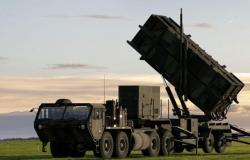The successful downing of two Russian ZM22 Zircon missiles over Kiev on the afternoon of March 25 made it possible to obtain much more data about them and to find out that this type of missile.
Unlike the Kh-47 Kinjal, the Zirkon is a hypersonic missile that can maintain a constant hypersonic speed and does not accelerate only for a short time due to a solid fuel engine, as in the case of the Kinjal, writes the Ukrainian publication Defense Express.
The missile fragments found on Monday turned out to be much larger, which allowed Ukrainian specialists to conduct a more detailed analysis of them.
According to the first research results, the Zircon missile is equipped with a hypersonic jet engine.
“Zircon”, which can officially fly at an altitude of 30-40 kilometers, reaches a constant speed of up to Mach 5.5 on the marching section of the flight. The flight in this area takes place in a rarefied atmosphere, which allows to reduce the heat load due to friction with the air.
At the same time, the speed at Mach 5.5 for “Zirkon” is not maximum – approaching the target, it accelerates to Mach 7.5 for a short time. At this time, the missile body heats up to the maximum temperatures that the special heat-insulating coating can withstand. However, as it approaches the ground and, consequently, the target, the speed of the missile decreases to Mach 4.5. This is no longer hypersonic speed, but it is quite high for a rocket.
Experts note that the use of a hypersonic jet engine in the “Zircon” gives it advantages over the Kh-47 “Kinjal” missile, which accelerates to such speeds.
The real capabilities of “Zirkon”, exaggerated
At the same time, experts say that the real capabilities of “Zirkon” are much lower than what was officially announced by Russia. Thus, President Vladimir Putin claimed that the missile can develop a speed of up to Mach 9, but in practice the “Zircon” does not even come close to it. Currently, it is also known about the flight range of the missile of 700 kilometers, while the declared range is 1,000.
However, even the Zircon’s pre-impact speed of Mach 4.5 is quite significant. For comparison, the Kh-22 supersonic cruise missiles that Russia launches from Tu-22MZ aircraft in the terminal area develop speeds of up to Mach 2-2.4. Therefore, “Zirkon” is certainly very difficult to intercept with a missile, but modern anti-aircraft missile complexes can cope with it.
The publication notes that the main question regarding “Zircon” is still the missile guidance system. Previously, analysts assumed that it had an active radar homing head, which was suggested by a video of the Ministry of Defense of the Russian Federation of a test of this missile, where it hit a target in the form of a barge. Probably, after receiving the remains of the downed missiles yesterday, experts will be able to get more accurate information, because electronic components were found among the remains.
At this time, it is difficult to say how many Zircon missiles Russia has in service. Valeri Romanenko, a researcher at the State Aviation Museum, said in a comment to Suspilno that in 2023, Russia planned to produce about 20 Zirconi missiles, but this program was not fully implemented.
Following the rocket attack in Kiev, 10 people were injured, two of whom had to be hospitalized. Part of the Mihailo Boiciuk Academy of Decorative and Applied Arts and Design building was destroyed as a result of falling fragments of the downed missile. A tall building was damaged in the Solomian district.
Tags: secrets Russian Zirkon hypersonic missile hands Americans
-





